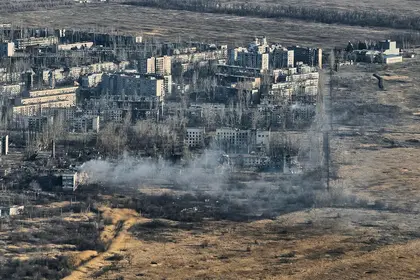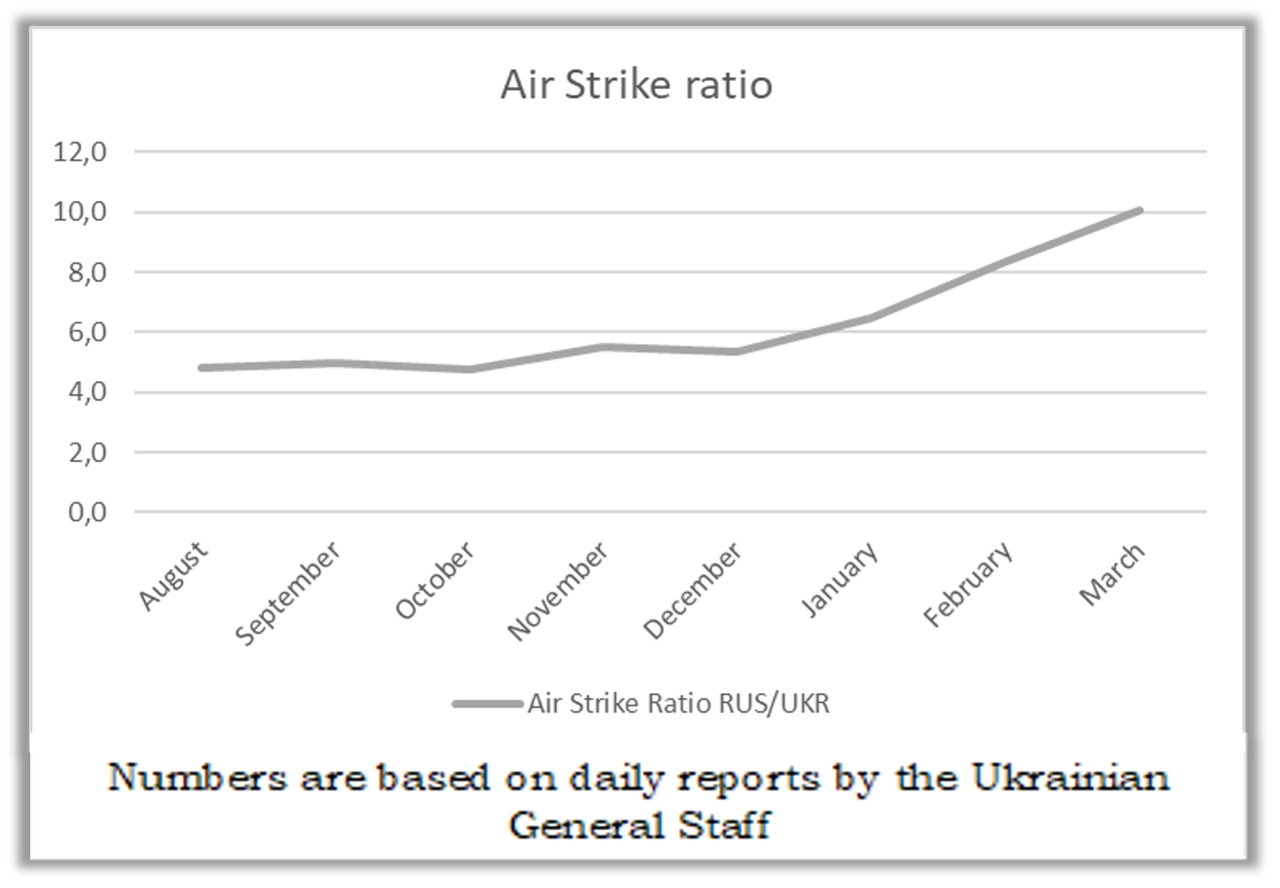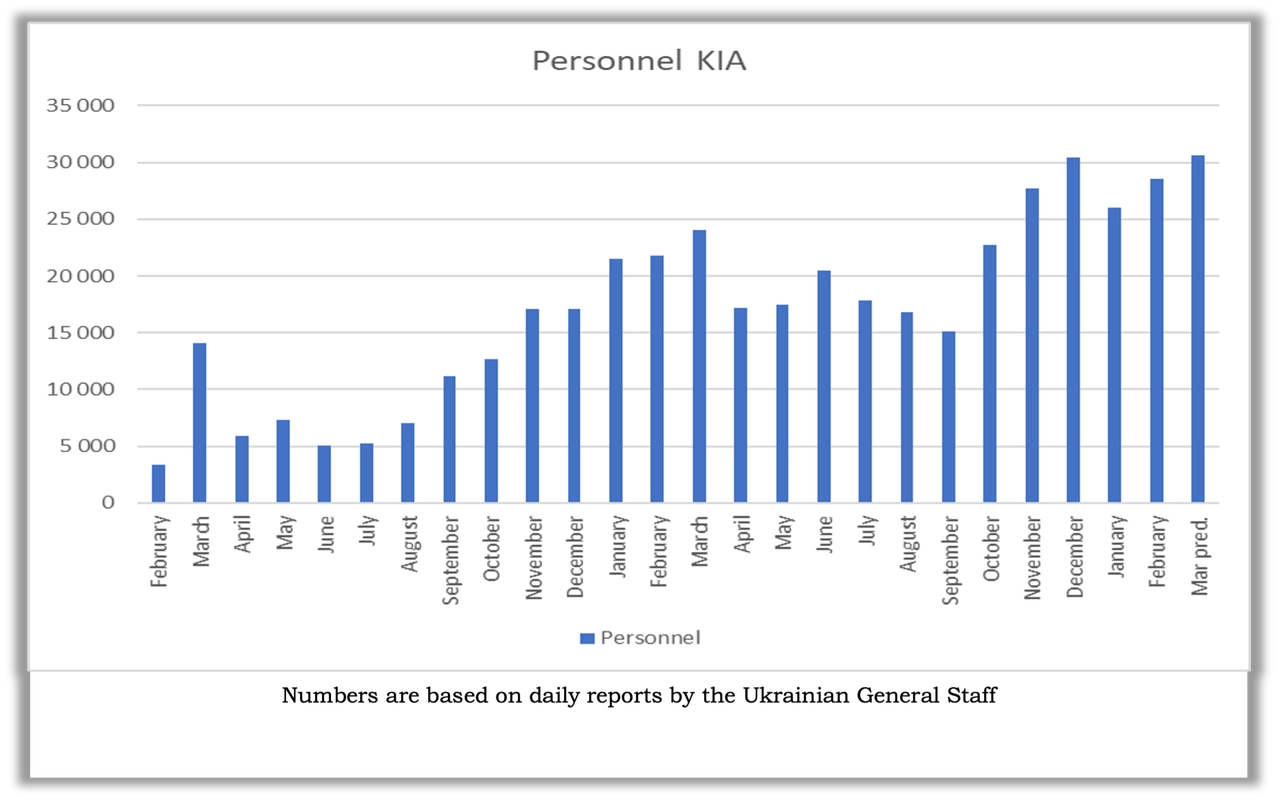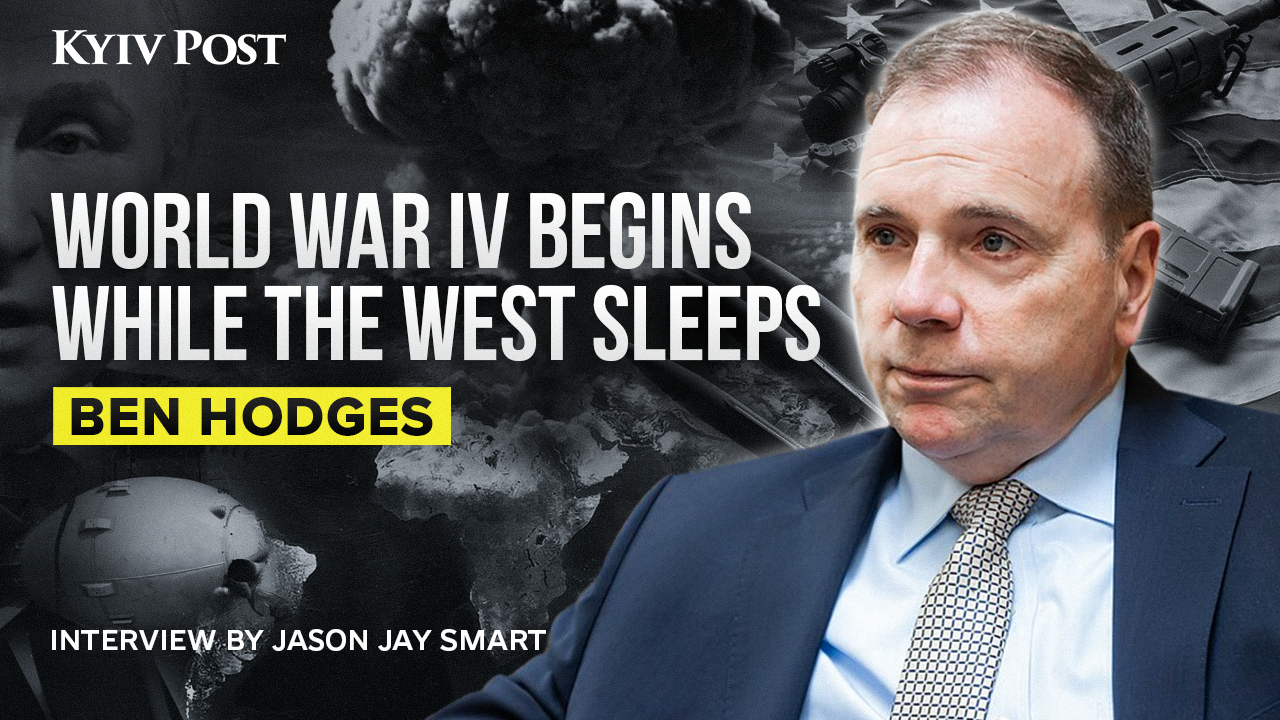Setbacks on the battlefield have a psychological impact. Seeing cities and settlements being devastated and the Armed Forces of Ukraine slowly being pushed back is straining. Seeing friends and acquaintances killed is distressing. More than 10 years of war, millions of internally displaced and refugees, destroyed homes and plans are psychologically exhausting.
As is a lack of support from your allies. Lack of commitment to victory. Running out of ammunition and air defense. The knowledge that your friends have the means needed for you to succeed but instead choose to help too little or too late, has a huge psychological impact on all.
JOIN US ON TELEGRAM
Follow our coverage of the war on the @Kyivpost_official.
A promise of NATO membership when the war ends – a pledge that helps fuel Russia’s determination to never give up – further helps erode the Ukrainian resilience.
I have just returned to Norway after my seventh visit to Ukraine since the full-scale war started. This visit was a different experience altogether. The ready smiles, optimism, and resilience were replaced by a sense of exhaustion, anxiety, gloominess, and fear for tomorrow.
Before sunset
In September, Ukraine for the first time achieved artillery parity with Russian forces. As a combination of increased Russian import of artillery shells and production and reduced inflow of Western defense aid, Russian forces are currently firing 10-12 times more shells than the Ukrainian forces. Consequently, they are increasingly using tanks and armored personnel carriers in support of their assaults on Ukrainian positions.

Latest US Aid Package for Ukraine Probably Includes ADAM Anti-Personnel Mines
Ukrainian soldiers are not only suffering persistent barrages of artillery, MLRS and an ever-increasing number of strike drones, but also glide bombs. Russia has gradually increased its use of glide bombs along the frontline since 2023.
While Ukraine has found ways to alleviate the lack of artillery, it will be a struggle to solve the lack of air Defense systems and missiles.
Ukraine’s air defense network very fragile in absence of Western support
Ukraine is facing severe shortages of air defense missiles. It is expected to run out of missiles in late March/early April. In a recent article, The Telegraph alleged that “instead of trying to shoot down four out of five Russian missiles, as is the case now, Ukraine’s air defenses will be able to bring down only one out of five missiles.”
The statistics are, however, inaccurate. Ukraine is shooting down four out of five Russian drones. It has, however, been downing far fewer missiles. Since the start of the full-scale war, it has shot down close to 80 percent of the Kh-101/555/55s; nearly 50 percent of Kalibr cruise missiles; 40 percent of Kinzhal and Iskander-K missiles. It has, however, been unable to down any of the S-300/400 or Iskander-M missiles. The latter three encompass around 45 percent of the missiles fired against Ukraine.
Air defense situation was bad, but threatens to get worse
That said, Russia has fired far fewer missiles against Ukraine this winter compared to the same period last year. In the period from October 2022 to February 2023, Ukraine downed 621 missiles. One year later, only 379 were shot down. The reduction of 39 percent is not a result of a reduced Air Defense capability but a reduction in Russian missile launches. The aggressor is either not producing as many missiles as predicted or it is stocking up for a future escalation. The latter makes little sense, however, bearing in mind Ukraine’s temporary air defense vulnerability.
If Russia is allowed to establish air supremacy over Ukraine – thereby rectifying its biggest strategic blunder since the initial days of the full-scale war – the war will completely change in nature. It will allow Russia to interdict all logistic movements across Ukraine, destroy critical infrastructure, target strategic command and control, bomb major population centers and not least, decimate the Ukrainian security and defense sector from the air at its leisure.
While the Ukrainian Air Force has maintained a constant level of activities since October, the Russian Air Force has recently increased the number of air strikes substantially. The ratio has changed from 1:5 to 1:10 in Ukraine’s disfavor.
Russia has both increased the number of sorties and the use of glide bombs and evolved its ability to operate jointly with the Ground Forces. It was able to establish local air control over Avdiivka during the last weeks of the battle.
The Ukrainian dip in October is likely connected to its F-16 program. As I argued in August, qualifying its personnel to fly, maintain and support the F-16 – has probably forced the Ukrainian Air Force to temporarily withdraw some of its pilots and technicians from their crucial role of upholding air control and supporting the Ukrainian ground forces.
While it might take four to six months for an experienced fighter pilot to operate an F-16 effectively, it might take one to two years to get all pilots and technicians through the training program.
Depending on the ratio between available fighter pilots and combat aircraft, the process of introducing F-16s into the Air Force might temporarily leave Ukraine with a reduced availability of MiG-29 Fulcrum and Sukhoi Su-27 Flanker jets. This will affect Ukraine’s ability to close the sky and support the ground offensive.
Additionally, Ukraine is inevitably experiencing battlefield losses. It has lost both combat aircraft, pilots, and air defense systems (Patriot and NASAMS).
Before sunrise
After the darkest night comes the brightest day. While the next months will be critical, the Russian window of opportunity is fast culminating.
The lack of ammunition is not fully reflected in Russian losses. It is mostly mirrored in the Russian theater-wide initiative, its relentless assaults, and continuous incremental advances.
Russia is losing manpower and equipment at a rate not previously experienced. If the present trends persist, Russian forces will have lost 30,600 men in March (highest since Feb. 24, 2022), 370 tanks (fifth highest), 800 APC (third highest), 50 Air Defense systems (third highest), 930 tactical and operational level UAVs (highest), 1,700 vehicles and fuel tanks (highest), and 220 pieces of special equipment (highest).
The huge losses reflect the crucial importance of drones in modern warfare. Ukraine has demonstrated that it can achieve an advantage on the battlefield by using high-tech weapons.
“According to an analysis by Verstka of Russian Pension and Social Insurance Fund data, there has been a record growth between 2022 and 2023 in the amount of Russian men aged 31 to 59 with disabilities, over the 8 years of available data. In 2022, there were officially 1.67 million men with disabilities in Russia aged 31 to 59. This figure increased by 507,000 or 30 percent in 2023. Russian demographers have told Vesrtka that the increase in the number of men with disabilities was most likely due to the growth in military invalids."
In 2023, the number of disabilities among Russian men aged 18 to 30 years also increased by about 13,000.
An increase of more than half a million disabilities throughout 2023 is indicative of an enormous rate of casualties. During two years of full-scale war – and recognizing its tactic of “human wave” assaults against prepared defensive positions, facing both artillery barrages, minefields, and intense small arms fire - a million men might have become disabled.
The numbers lend credit to Ukraine’s reports on Russian casualties
According to the Ukrainian General Staff, 431,550 Russian soldiers have been liquidated as of March 18, 2024. If applying a factor 1:2 KIA/WIA, Russia might have experienced a total of 1.3 million casualties so far.
Western assessments have consistently been far more conservative than the Ukrainian reports. On March 3, British Intelligence assessed that Russia had highly likely lost over 355,000 personnel killed and wounded. This is consistent reporting from various Western intelligence agencies since 2022. The discrepancy is a consequence of intelligence services only reporting verified numbers. Western reports, therefore, reflect the bare minimum. The real numbers were always higher. The dramatic increase in disabilities in Russia – most likely because of the war – illustrates their shortcomings.
Russia’s ability to sustain operations is being severely degraded by the day. Even if it was able to breach Ukrainian defensive lines, it would likely be unable to support a breakthrough.
Ukraine is targeting Russian logistics – big time
In recent weeks, Ukraine has successfully struck 12 oil refineries in Russia. Its attack on the Slavyansk oil refinery on March 17 is reportedly the ninth Ukrainian strike on a Russian oil refinery in the past week.
The campaign is supported by an unprecedented number of strikes against Russian trucks and fuel tanks. Until March, the monthly average destroyed during the last two years was 550. The numbers, however, started climbing substantially from June 2023, reaching a monthly average of 930 during the last 3 months. In March, however – if the present trend persists – a staggering 1,700 will have been destroyed.
Ramping up production
Europe is also stepping up to the task while the US is trying to resolve the impasse in Congress.
Democrats and a separate bipartisan group of lawmakers at the US House of Representatives have launched two processes to sidestep Speaker Mike Johnson and force a vote on a $95 billion security assistance package for Ukraine, Israel and Taiwan, using a discharge petition.
President Biden is still in the position to instruct the US Department of Defense to use the $4 billion in presidential funds to donate military equipment to Ukraine. Just days ago, the US “found” $300 million for a new weapons package.
Ukraine needs about 200,000 shells every month to continue fighting Russian forces. A month ago, the Czech Republic launched a European-wide initiative to procure about 500,000 155mm artillery shells and 300,000 122mm shells from countries outside the EU. It completed the fundraising ten days ago and has started the process of procuring artillery shells for Ukraine. According to The Wall Street Journal, the Czech Republic has recently found further suppliers for delivery of an additional 700,000 shells if funds are made available.
As highlighted in my report “Europe in Flames – Prognosis for 2024,” both the US and Europe are ramping up their defense production. The US Army aims to boost its monthly production to 36,000 by March, 60,000 by September, and 70,000 to 80,000 in early 2025. The production will reach 100,000 shells a month by the end of 2025, depending on when Congress agree on the supplemental funding bill.
Both Europe and Ukraine are ramping up their production of drones. Several European countries have joined a coalition committed to producing and supplying Ukraine with one million drones (no timeline provided).
Ukraine is also doing its utmost to ramp up its domestic production. More than 200 companies are involved. It has pledged to produce another 1 million drones a year, including thousands of long-range drones capable of deep strikes into Russia. It already has up to 10 companies producing drones that can reach Moscow and St Petersburg. On March 5, Deputy Minister of Strategic Industries, Hanna Hvozdiar, claimed that Ukraine can produce 150,000 drones every month, and may be able to produce 2 million drones by the end of 2024.
Over the last two years, Ukraine has repeatedly managed to turn refusals to deliver certain weapon systems into pledges. It remains, however, to turn the US and German reluctance to deliver the long-range variant of ATACMS and the Taurus missiles. The two are interlinked. Both the US and Germany are reluctant to deliver long-range missile systems that can attack legitimate targets deep inside Russia for fear of an “escalation” of the war.
It is rather ironic because increasingly more Western Intelligence Services see a risk of a Russian attack on NATO countries. According to Germany, this might happen “from 2026 onwards” already. This is based on troop movements, the reorganization of the Russian army, missile deployments to the western part of Russia, as well as the increase in Russian arms production. The latter could lead to Russia doubling its military strength over the next five years compared to today. The bottom line is that it is just a question of time before yet another “No” is turned into a “Yes.”
The psychological factor
On March 14, Deputy Chairman of the Russian Security Council Dmitry Medvedev laid out the details of a so-called Russian Peace Formula. Its seven points included Ukrainian recognition of its military defeat, complete and unconditional Ukrainian surrender, and full “demilitarization”; recognition by the entire international community of Ukraine’s “Nazi character” and the “denazification” of its government; a [...] UN statement stripping Ukraine of its status as a sovereign state under international law, and a declaration that any successor states to Ukraine will be forbidden to join any military alliances without Russian consent; the resignation of all Ukrainian authorities and immediate provisional parliamentary elections; Ukrainian reparations to be paid to Russia; official recognition by the interim parliament [...] that all Ukrainian territory is part of Russia and the adoption of a “reunification” act bringing Ukrainian territory into Russia; and finally the dissolution of this provisional parliament and UN acceptance of Ukraine’s “reunification” with Russia.
According to the Institute for the Study of War, the tone of Medvedev’s post was “deliberately sardonic, and the calls he is making appear extreme, but every one of the seven points in Medvedev’s “peace formula” are real and central pieces of the Kremlin’s ideology and stated war aims and justifications – Medvedev just simplified and synthesized them into a single brutal Telegram post.”
Equally crucial, it is also an indication of Russian self-confidence. Russia believes it is winning against both Ukraine and the collective West. It sees the US on the brink of “civil war,” incapable of acting in its own interests. It sees a Europe unable to defend itself, fearing that the US cannot be trusted to fulfil its pledge to help defend its allies. Not least, it is observing a dwindling inflow of defense aid as the West continues to hold Ukraine at a safe distance. NATO and EU membership lies somewhere in the future when the war (Russia is determined to win) has ended.
Western behavior has a huge impact on the psyche of both Ukraine and Russia. The US and Europe are still failing to convince both the victim and the aggressor that they are willing to do what is needed to win.
That’s why the recent statements by President Macron are so very important. Once NATO members start discussing the option of deploying military forces to Ukraine, Ukrainian resilience will increase and Russian hope for a victory will diminish.
I have previously provided “nine reasons negotiations with Russia are utterly pointless.” Medvedev’s post underlines the core message of the article: Negotiations with Russia will not bring peace.
Words will not make Russia withdraw. It will only withdraw in the face of an overwhelming military force. “We have made it clear that we will make every effort to ensure that Ukraine wins this war, protecting not only its territory but also the rules-based world order. This is an existential issue not only for Ukraine but for all of us. There can be no “ifs and buts” here. We have to draw “red lines” for Russia, not for ourselves, to prevent Russia from winning. And finally, to open the way for Ukraine’s victory, we cannot exclude any form of support for Ukraine.” Lithuanian Foreign Minister Gabrielius Landsbergis said.
As a demonstration of his fears for Western resolve, President Putin immediately resorted to the threat of a nuclear war. He knows it would fundamentally change the military balance in his disfavor.
Since parts of the Hybrid War are fought in the cognitive space, the psychological factor will affect the outcome of the war. It is high time to instill confidence in friends and fear in the enemy.
The views expressed in this opinion article are the author’s and not necessarily those of Kyiv Post.
You can also highlight the text and press Ctrl + Enter











